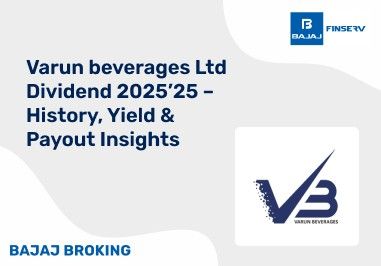Credit Exposure
It is very necessary to get an understanding of credit risk before moving on to credit risk exposure. It refers to the chance that a borrower would fail to return the due amount, causing the lender to experience a disruption in cash flows and an increase in the cost of collection. Some instances of credit risk include the following:
- A borrower who does to pay the required interest, principal, or both on a credit card or mortgage loan is considered delinquent.
- A debtor is unable to settle his trade invoice.
- A company that cannot make timely coupon or principal payments on debt generated by it, etc., is an example of a failing firm that does not pay due salary or wages.
Exposure to credit risk is a component of credit risk exposure. It is the most that a lender stands to lose if a borrower fails to repay their debt. Other aspects of credit risk include the following:
- The default probability is an assessment that may be used to calculate how probable it is that the borrower will not fulfill his obligations as agreed upon.
- The recovery rate refers to the percentage of delinquent debts that can be redeemed via legal recovery processes or other debt collection initiatives.
Types of credit risk
There are three distinct categories of credit risk:
- Credit Default Risk: This occurs when a borrower does not satisfy his or her commitment to repay the loan after the due date and more than 90 days have elapsed. This kind of risk may affect any credit-sensitive financial transaction, including loans, bonds, derivatives, etc.
- The Danger of Concentration: When the risk of the lender is related to a single exposure or set of exposures that have a high probability of causing harm to the company’s fundamental activities, this problem generally emerges when investment portfolios lack sufficient diversification or businesses depend excessively on a single customer for a major share of their revenues.
- Risk for the Country: Country risk refers to the danger that a nation cannot fulfill its commitments to make payments denominated in a foreign currency. A sovereign state’s political stability and macroeconomic performance directly relate to country risk.
- Downgrade Risk: It refers to the loss that results from a decline in credit risk ratings. When market analysts look at credit ratings, they automatically believe there would be operational inefficiencies and reduced potential for growth. The speculation makes it much more difficult for the borrower to repay the debt, which creates a vicious cycle.
- The Danger of Institutions: There is a possibility that borrowers may not comply with the requirements. In addition to the borrower, intermediaries between the lenders and borrowers also have the potential to be negligent about contractual obligations.
How Lenders Control Credit Exposure
Lenders may exercise control over their customers’ credit exposure in various ways. A credit card business determines credit limits after analysing a borrower’s anticipated ability to repay the amount owed to the firm.
For instance, college students with no credit history may have a credit limit of ₹10,000 imposed on them until they have established a demonstrated track record of completing timely payments. A client with a high income and a credit score of more than 800 may be eligible for a credit limit of ₹10,00,000 from the same credit card provider. This may be justified.
In the first scenario, the credit card business decreases its credit risk exposure to a borrower with a greater risk. The corporation further develops its commercial connection with a rich customer in the second possibility.
Credit Exposure vs. Credit Risk
A lot of the time, people may use the phrases credit exposure and credit risk interchangeably. Yet, credit exposure is a component that truly makes up credit risk.
Other factors include the probability of default, which is an estimation of the likelihood that the borrower will be unable or unwilling to repay the debt, and the recovery rate, which is a quantification of the portion of the loss that is likely to be recovered through bankruptcy proceedings or debt collection efforts.
Both of these factors are considered when determining the loan’s value.
How is Credit Risk Exposure Calculated?
Even though it is practically impossible to determine who would default on loans, financial institutions should primarily emphasise risk assessment.
Option 1: Credit risk is calculated by multiplying the probability of default by the exposure and the loss rate.
Calculate the likelihood that the debtor will be unable to keep up with his or her payments by calculating the default probability. Credit risk exposure is the total amount that the bank or other lender anticipates collecting from the borrower throughout the loan. The percentage of the total exposure that may be recovered if the debtor defaults on payments is the Recovery Rates.
Option 2: Determine the borrower’s credit score using the FICO model. This may be useful for banks in determining a borrower’s creditworthiness, which in turn enables them to assess the level of possible risk.
Determine the level of debt in relation to income. This may assist financial institutions in determining an individual’s current financial standing. Have they calculated whether or not their cash flow will cover the monthly payment? Does the person seem to have developed a habit of continually taking out larger and larger loans? There should be a greater incentive for financial institutions to provide loans to borrowers with a debt-to-income ratio lower than 35%.
Methods that are accurate in assessing credit risk calculation may assist in limiting the possibility of losses and enable financial institutions to provide better loans. When it comes to determining the level of risk involved with extending credit, financial institutions should concentrate on what is known as the “five C’s”: credit history, capability to repay, capital, related collateral, and the terms and conditions of the loan.
In the present market, financial institutions report receiving an increasing number of loan applications electronically. The majority of financial institutions depend on credit risk software to make judgments and provide services to consumers in a timely manner. The software that monitors credit risk may be tailored to your financial institution’s specific needs to manage credit risk effectively.
Conclusion
Credit risk refers to the degree of unpredictability to which a lender is exposed. It’s possible that borrowers won’t adhere to the terms and conditions of the contract. Credit risks come in various forms, including default risk, concentration risk, nation risk, downgrading risk, and institutional risk, which are all faced by financial institutions. The “5 Cs” of credit risk is used by lenders to determine whether a borrower is creditworthy: credit history, capacity to repay, capital, terms of the loan, and collateral.













